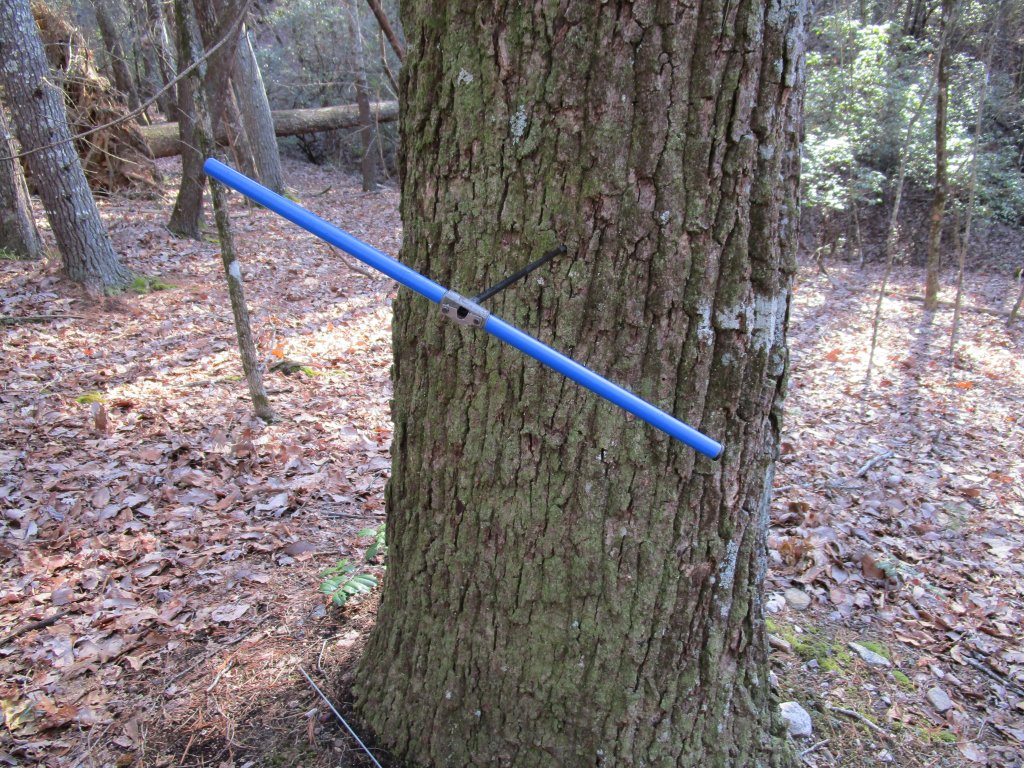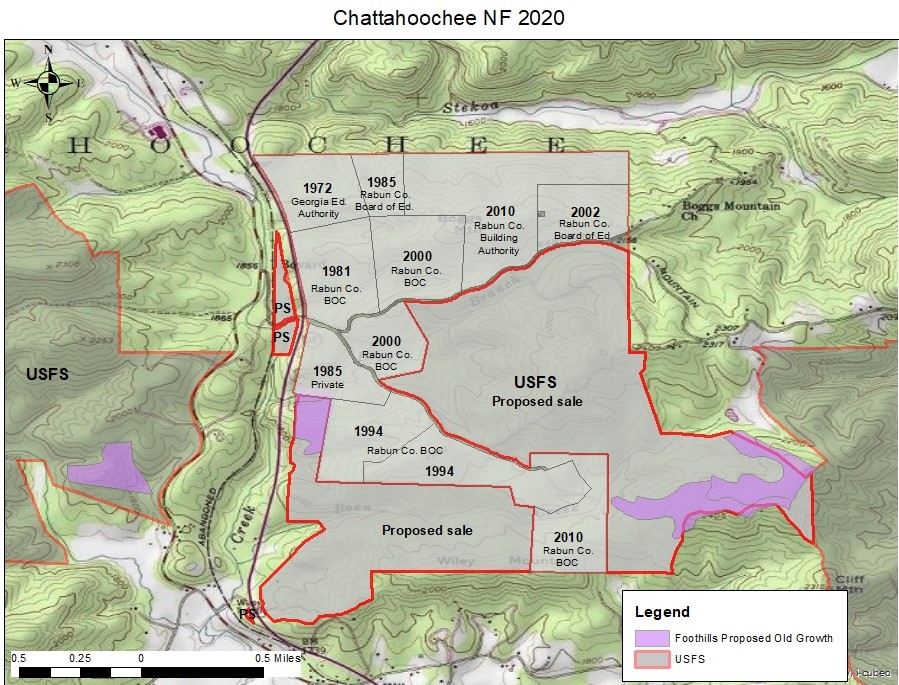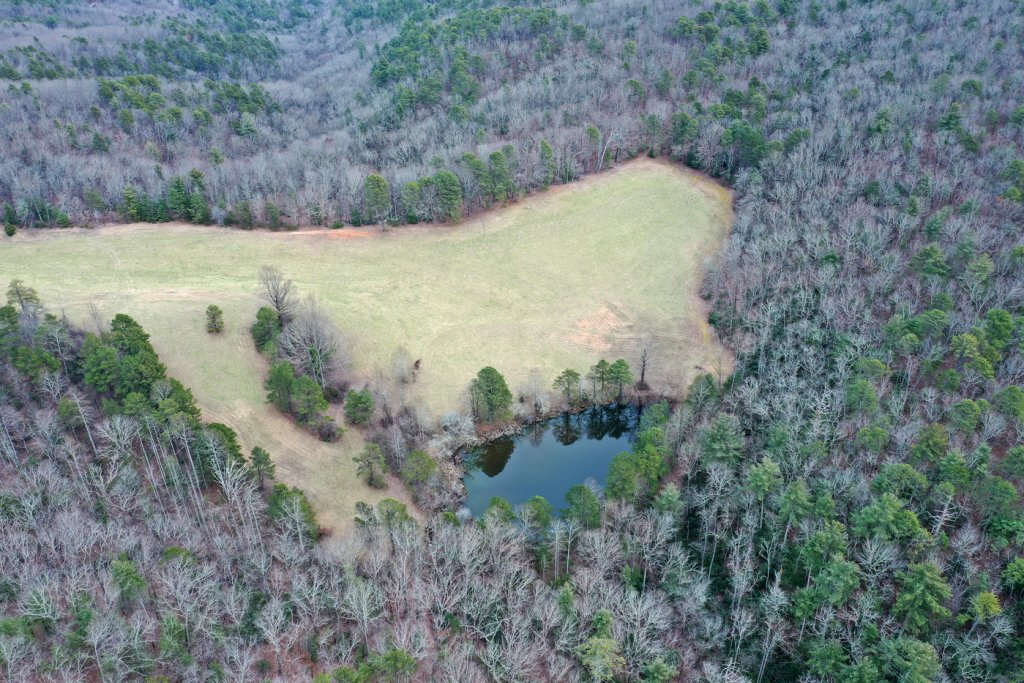By Buzz Williams
This is the second installment of an educational blog about the Boggs Mountain national forest land tracts in Rabun County, which are now being considered for sale by the Forest Service. The Boggs Mountain land is 3 separate tracts, totaling just over 800 acres. These parcels are included in the 30 tracts of national forest land named in the “Chattahoochee-Oconee Land Adjustment Act,” that was sponsored by Georgia politicians and added to the 2018 Farm Bill. This legislation stated that these tracts have “lost their value for national forest purposes.”
About one-third of the 3,841 acres of national forest land proposed for sale or trade by the Chattahoochee-Oconee Land Adjustment Act are in Rabun County–8 tracts totaling 1,246 acres. The Forest Service has made it known that they would be guided by the desires of Rabun County in deciding whether or not to sell any of these public lands, and specifically, the agency needs a resolution from the Rabun County Commissioners stating the county’s position. A recent statement by the Rabun County Commissioners presents the pubic with conflicting information, first saying that “we are steadfastly opposed to the sale of a single acre of our national forest,” but following with “…there is a desire and a need…to acquire the approximate 818 acres located in the Boggs Mountain area.”

The Chattooga Conservancy is opposed to selling national forest land, including the Boggs Mountain tracts, for three reasons: 1) These tracts have NOT “lost their value for national forest purposes;” 2) Rabun County has not demonstrated a specific need for acquiring all or a portion of the Boggs Mountain tracts; and, 3) The proposal to sell these parcels of national forest land is politically instigated, and would set a clear precedent for selling more of our public lands.
In our last blog, we explained that a dangerous precedent would be set by allowing politicians to initiate the transfer of public land without a thorough assessment of the land’s value in terms of recreation, ecology, timber, watershed, scenery, archaeology and geology, and without full public participation. In the past, public land transfers to Rabun County in the Boggs Mountain area have been conducted in compliance with the National Environmental Policy Act (NEPA), which requires both thorough environmental analyses and full public participation. However, in this case, because it is an Act of Congress that gives full authority to “the Secretary” (of Agriculture), it has been determined by the Chattahoochee National Forest Supervisor (who works for the Secretary of Agriculture) that environmental review is discretionary, and the land sale/transfer is to be conducted according to the “Forest Service Handbook,” not NEPA. Nonetheless, our field work clearly demonstrates that an adequate study of the tracts has not been conducted. For example, we have discovered 2 stands of trees within the Boggs Mountain tracts that the Forest Service identified as old-growth forests. Old-growth forests are rare, and have great biological and aesthetic values.
In recent weeks, we have discovered more values consistent with national forest management objectives, including: scenic vistas, healthy populations of whitetail deer and wild turkey, many acres of recovering native hardwood and hardwood/pine forests, wetlands, waterfalls, and abundant suitable habitat for many native species. It is clear that the Forest Service has not done their due diligence—if so, the guiding legislation would have never concluded that these lands had “lost their value.”

Neither has this proposed national forest land sale involved the public. The legislation mandating this land transfer had its genesis in negotiations between former Rabun County Commissioners, the Forest Service, politicians, and a few large organizations—all behind closed doors. Further, we do not believe that the Chattahoochee-Oconee Forest Supervisor has the discretion to exempt the sale or trade of public land from full environmental review and analysis, and full public participation. The Chattahoochee-Oconee Land Adjustment Act is a political process, without guaranteed environmental review and public input, which would set a very bad and dangerous precedent.
In addition, the Rabun County Commissioners have been short-shrifting the public’s right for full disclosure of the county’s intentions concerning the potential sale of the citizens’ national forest land. While the commissioners have indicated their interest in purchasing the Boggs Mountain tracts, no discussions or answers have been forthcoming to a whole array of questions that have emerged since the potential land sale was announced. Recently, and to their credit, the commissioners have scheduled a public meeting at the Rabun County Court House for Thursday, February 13th at 6:00pm to hear 3-minute statements from citizens; however, this “will not be a question and answer session.” The Rabun County Commissioners have not articulated a clear and imminent need for gaining 1 acre, much less 800 acres, of national forest land in the Boggs Mountain area. Without this, the commissioners appear more interested in land speculation for unknown development, rather than demonstrating a need for more acres to benefit the citizens of Rabun County.
In the Boggs Mountain area, one of our latest findings concerns the old landfill, which is located in between the 2 larger Boggs Mountain tracts currently proposed for sale. This property had been acquired from the Forest Service in an earlier land transfer deal, based on a stated need for a specific purpose by the county (constructing the landfill). The landfill was built with no liner and was operated by Rabun County until the 1990s. (Landfill liners were subsequently required by the State of Georgia for containing contaminated material, and to keep it from leaching into ground water and adjacent surface waters). In 1997, the site was added to the Georgia Environmental Protection Division’s Hazardous Site Inventory, following monitoring that showed the site had a “known release of carbon tetrachloride in groundwater exceeding the reportable quantity.” At that time, the Georgia EPD determined that the site “required corrective action.” The corrective action for this site, as is common in Georgia for old landfills, was to monitor for “natural attenuation” as a mitigation measure. Later, when monitoring wells revealed that contaminated substances were moving towards adjacent Forest Service land, the Forest Service deeded 60 more acres to Rabun County for the purpose of mitigation.
So, how does this relate to the proposed national forest land sale on the table? The southerly-most tract slated for sale by the Forest Service is a 250-acre parcel on Boen Creek. Boen Creek runs south of the old landfill, and then flows for about a mile where it passes under Hwy. 441 and into Tiger Creek. Obviously, the concern is that contamination may continue to migrate onto the 250-acre tract. In fairness, monitoring of the hazardous site shows that contamination levels are diminishing with time and natural attenuation. Nevertheless, the fact remains that contaminants from the old landfill have exceeded reportable and/or safe levels of occurrence, and may still be migrating toward the property to be sold as a part of the Chattahoochee-Oconee Land Adjustment Act.
Perhaps Rabun County wants to acquire the 250-acre tract below the old landfill to hedge against future liability? The county still has not given any specific reasons for acquiring the tract. Field surveys show that much of the forests on this tract are pine plantations, some of which were previously marked for a timber sale. We also know that the county plans to build a new wastewater treatment plant 3 miles south, in Tallulah Falls. Does the county plan to acquire the property for future development along Highway 441, when sewer and water become available? Will they clear-cut the already marked timber to help off-set the fair market value of the land, which could be millions of dollars? What about the stand of old growth on this tract—would it be cut? The answer is: we don’t know, because the Rabun County Commissioners have not given any specific reasons for acquiring the property.
The larger, northeastern Boggs Mountain tract that Rabun County wants to buy is 538 acres. Combined, the three Boggs Mountain tracts encompass more land than the county has acquired in the past for three schools, a landfill, a detention center, and a recreation center and event arena. Why Rabun County would need so much additional land remains a mystery. Some mention has been made about developing a school farm, bike trails and a new landfill; however, no specific plans or locations have been documented.

The 538-acre Boggs Mountain tract has by no means lost its value. We have observed an abundance of wildlife during surveys of this tract, such as a large flock of Eastern wild turkeys foraging on acorns in the tract’s beautiful native hardwood forests. Deer stands and a hunting camp are evidence that local hunters regularly use the area. Nor is the tract isolated from the larger body of national forest land; there is an important wildlife corridor on the ridge between Cliff Mountain and Boggs Mountain that connects this tract with the Chattooga River watershed. Our field work has also revealed several wetlands and unique habitats, which need inventories during the spring growing season. We have documented scenic view sheds from neighboring private lands that would be irreparably harmed by development. The bottom line, again, is that these valuable public lands should not be sold to Rabun County unless a clear need has been demonstrated for a specific number of acres, with detailed plans for where and how these lands would better serve the public.
The third tract for sale in the Boggs Mountain area is a thin sliver of land along Highway 441, near the entrance to Rabun County High School. This 27-acre tract is the only case where the Forest Service could make a legitimate argument that the land has lost its vale for national forest purposes. But yet, not even in this case has Rabun County made any statement about how the land would be used.
Lastly, there is absolutely no guarantee that the national forest land sales or trades would be used for acquiring other lands in our local Chattooga River Ranger District, which would result in a net loss of valuable public lands in Rabun County. Past land land trades have already lost hundreds of acres of Rabun County’s pristine public lands.
The public “forum” scheduled by the Rabun County Commissioners for February 13th to allow citizens share opinions about the proposed land deal is somewhat misleading, because the county has said that this discussion will not address answers to pressing questions. There are too many unanswered questions involved in this important national forest land adjustment proposal to move forward with a meaningful decision about the liquidation of our valuable public lands. The precedent set by selling or exchanging public lands based on political mandates and without adequate public involvement is reason enough to oppose this land sale.
Please attend the February 13th public meeting, to oppose the sale or trade of public lands for political or commercial purposes. We have an obligation as the owners of our national forest lands to protect it for future generations.

